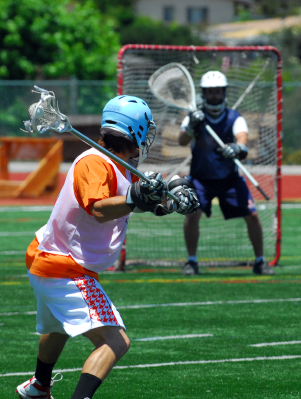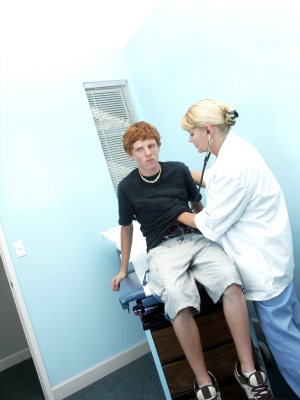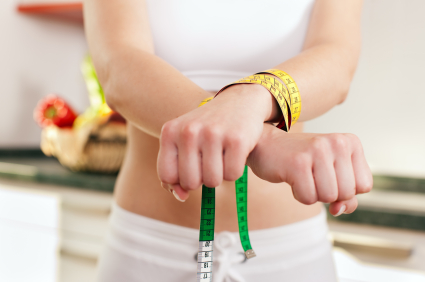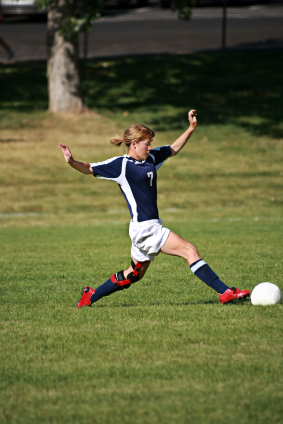With the spring sports season beginning, high school athletes are returning to the fields, courts, pool, and tracks ready to play their sports.
"As athletes return to the competitive sports roster, they should gradually acclimatize to their activity of choice and to follow sports safety protocols," says Charlie Thompson, MS, ATC, head athletic trainer at Princeton University and chair of the National Athletic Trainers' Association College/University Athletic Trainers' Committee. "With the right preparticipation planning and gradual return to full participation, they will be taking the right steps to prevent injury and enjoy a competitive season." 
More than 421,000 young men and women participate on more than 17,800 NCAA sponsored sports teams1 and more than seven million high school students play sports today. There are a reported 715,000 high school sports-related injuries experienced each year, and 8,000 children are treated in emergency rooms each day for sports-related injuries.2
Pre-Season Sports Safety Tips
Here are fifteen ways parents can help their kids prepare for the winter sports season to reduce the risk of injury:
- Make sure your athlete is physically and mentally in the game: Parents, with assistance from coaches and athletic trainers, should determine whether their children are physically and psychologically conditioned for the sport/activity level they're playing. Do not push children into something they do not want to do. If an athlete has been injured and is returning to sport, it's critical for him or her to have the right mind set and confidence to return to play and avoid repeat injury.
- Take your child for a pre-participation exam: All athletes should have a pre-participation physical evaluation (PPE) to determine their readiness to play and uncover any condition that may limit participation, such as a history of concussion. For those playing contact and collision sports such as lacrosse and soccer, parents should consider having their child take a baseline neurocognitive test if the private club or school sports program doesn't provide one to such athletes, as more and more programs across the country are doing (4 out of 10 at high schools with athletic trainers, according to a recent study).

- Demand a team approach to sports injury treatment: Find out who will provide care in case your child is injured and ask to review their credentials. Many schools and sports teams rely on athletic trainers or parents with medical and first aid training and certification to keep kids safe. Yet less than half of high schools have access to athletic trainers.
- Help them beat the heat: As the hot and humid weather of summer approaches, the risk of dehydration and more serious forms of heat illness increase. Make sure your young athlete hydrates before, during and after sports.
- Use your head: There are between 1.6 million and 3.8 million brain injuries occurring in sports each year and 63,000 occur in high school sports alone, according to the Centers for Disease Control and Prevention. Be certain the student-athlete and medical team are well educated on concussion prevention and management and that the athlete is encouraged to speak up if hit in the head and suffering from any related symptoms including headache, dizziness, loss of memory, light-headiness, fatigue, or imbalance to name a few. [Note: an increasing majority of states now make concussion education of parents and coaches mandatory]
- Ensure safe weight loss and maintenance: Unsafe weight management practices can compromise athletic performance and negatively affect an individual's health. Athletes and physically active individuals often attempt to lose weight by not eating, developing poor body image due to the influence of others, or engage in unhealthy weight control behaviors and restricting fluids. "This is especially true in weight restrictive sports like wrestling, or gymnastics or ice skating where lean and fit bodies are aesthetically appealing, says the NATA's Thompson. "It is critical these athletes they work with an athletic trainer, nutritionist or other qualified health care professional to establish a balanced diet and approach to weight gain or loss in keeping with their level of activity."

- Take it to heart: Many schools today have automated external defibrillators (AEDs) on site during competitions which if used efficiently and effectively can save a life and stave off a catastrophic situation. Ensure that the medical expert and other personnel know where they are located, how to use them and that they are placed on sidelines during competitions and games.
- Share an athlete's medical history: Parents should complete an emergency medical authorization form, providing parent contact information and permission for emergency medical care for the student athlete, such as for an asthma attack. Check with your school/league to obtain the form.
- Ensure equipment is in working order: Make sure the field is free of all hazards and that all equipment, such as soccer goalposts, is safe. This also includes emergency medical equipment such as spine boards, splint devices and AEDs (which should be checked once per month; batteries and pads need consistent monitoring and replacing). All it takes is a slip on a rutted soccer field to cause injury, such as ankle sprain.
- Check out the coaches' qualifications: A background check should always be performed on coaches and all volunteers:
- Coaches should have background and knowledge in the sport they are coaching. They should be credentialed if that is a requirement in the state, conference or league. Also, ensure appropriate credentials for coaching from the respective sport governing body.
- All coaches should have cardiopulmonary resuscitation (CPR), AED and first aid training.
- Coaches should strictly enforce the sports rules and have a plan for dealing with emergencies.
- Practice good personal hygiene to prevent MRSA and other infections: With the advent of MRSA and related bacterial, viral and fungal skin infections reported in recent years, it is critical that athletes be discouraged from sharing towels, athletic gear, water bottles, disposable razors and hair clippers. All clothing and equipment should be laundered and/or disinfected on a daily basis. [For more tips on preventing the spread of MRSA, click here]
- Be smart about sickle cell trait: All newborns are tested for this particular inherited condition and those results should be shared during a pre-participation exam. Red blood cells can sickle during intense exertion (exertional sickling), blocking blood vessels and posing a grave risk for athletes with the sickle cell trait. Screening and simple precautions may prevent deaths and help the athlete with sickle cell trait thrive in his or her chosen sport. Be aware of warning signs including fatigue or shortness of breath that may indicate an athlete is in danger.
- Make sure your child's school/league/club has an emergency action plan: Every team should have a written emergency action plan, reviewed by the athletic trainer or local Emergency Medical Service. Individual assignments and emergency equipment and supplies need to be included in the emergency action plan. If an athletic trainer is not employed by the school or sport league, qualified individuals need to be present to render care. Knowing that a school has prepared for emergency will give parents peace of mind.
- Build in time for rest and recovery: Allow time for the body to rest and rejuvenate in between seasons. "If you're an athlete who has just finished [hockey or basketball] season and has your sights set on [lacrosse, baseball or spring soccer], make sure to take time off and recover from the rigors of grueling months on the field," says Thompson. If athletes don't make time for recovery, injury can occur. Acclimatizing to the next sport, with appropriate strength, flexibility and balance training, and
 the supervision of an athletic trainer, will help ensure a healthy season ahead. [For more tips on how to help your child avoid overuse injuries, click here]
the supervision of an athletic trainer, will help ensure a healthy season ahead. [For more tips on how to help your child avoid overuse injuries, click here] - Pay attention to sport specific injury prevention: "[Lacrosse and soccer are] sport[s] requiring lots of twists, turns and jumping," says Thompson. "These motions put added stress on the anterior cruciate ligament or ACL, one of four ligaments necessary for proper knee stability and function. Sudden movements or rigorous activity can significantly increase the chances of an ACL tear, a common injury among athletes - especially in females. "Increase power, agility and range of motion through stretching exercises that improve flexibility; braces to help control joint movement if necessary; and drills to strengthen the quadriceps, and other leg, hip, pelvic and core muscles."
"It's vital for parents to work in tandem with coaches, athletic trainers and other members of a school's medical team to ensure clear and consistent communication," says Thompson. "Only then is it a true win-win for the team, individual athlete and family members and friends cheering on the sidelines."
Source: National Athletic Trainers' Association
Notes:
1. NCAA Sports Sponsorship and Participation Rates Report for 2008-2009
2. Wier, L. (Thomson Reuters), Miller, A. (Student), and Steiner, C. (AHRQ). Sports Injuries in Children Requiring Hospital Emergency Care, 2006. HCUP Statistical Brief #75. June 2009.
Most recently updated March 13, 2012








